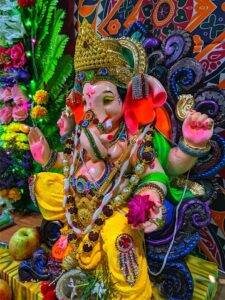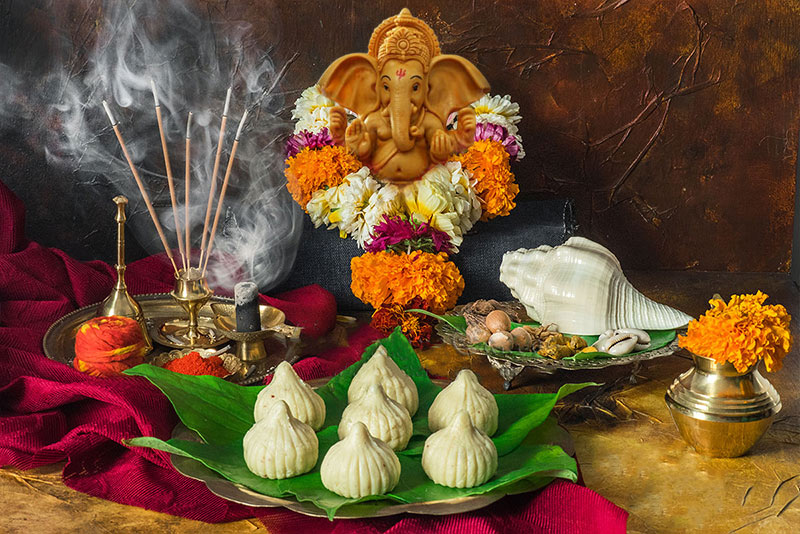Introduction: Ganesh Chaturthi is a significant Hindu festival celebrated with great fervor across India and by people of Indian descent worldwide. This joyous occasion marks the birth of Lord Ganesha, the beloved elephant-headed deity, and is observed with various rituals, prayers, and offerings. To truly appreciate the essence of this festival, we need to understand its origins and the underlying philosophy it represents.

The Significance of Ganesh: The word “Ganapati” is derived from “Gana,” which means collective, and “Pati,” which denotes the one who presides over. Lord Ganesha is revered as the one who brings people together, unites society, and bestows knowledge and wisdom. His symbolic form represents the unity between humans and the natural elements, emphasizing the interconnectedness of all living beings.
The Origins of Ganesh Chaturthi: The roots of Ganesh Chaturthi can be traced back to ancient times when people lived near rivers. The festival is closely connected to the natural cycle and typically falls in the month of Bhadrapada (August-September) when the first signs of the monsoon rains are observed. Preceded by other earth-respecting festivals, Ganesh Chaturthi is a part of the Maati che Tyauhaar, where gratitude is expressed to various elements of nature.
Traditional Worship and Rituals: Originally, families would create small Ganesh idols from fresh clay collected from the riverbanks. The process of making the idol was itself a form of worship, allowing devotees to experience and visualize the divine presence in the soil. Offerings made during the pooja, such as turmeric, kumkum, rice grains, and Durva grass, had medicinal and symbolic significance, promoting a sense of harmony with nature.

Evolution of the Festival: Over time, the festival evolved, and the involvement of the potter community led to more refined and durable idol-making techniques. The duration of the festival also extended from a few days to a ten-day celebration. While these changes brought wider social involvement, commercialization, and elaborate decorations, it is essential to retain the spirit of devotion and gratitude in the festivities.
Environmental Awareness: With the rise of commercialization and the use of materials like Plaster of Paris, thermocol, and plastic, environmental concerns emerged. Devotees are urged to make conscious choices to minimize the festival’s impact on nature. Opting for idols made of natural clay, avoiding harmful materials in decorations, and immersing idols at home or in clean water with nirmalya converted to compost are eco-friendly practices that align with the true spirit of Ganesh Chaturthi.
The True Essence of Devotion: Ganesh Chaturthi is not merely an outer display of rituals; true devotion lies in the unity of mind, heart, and actions. It involves embracing the interconnectedness of all beings, showing gratitude to nature, and making responsible choices that benefit both society and the environment. The celebration of Ganesh Chaturthi should remind us of the deeper meanings and teachings represented by Lord Ganesha’s form and existence.
Conclusion: Ganesh Chaturthi is a festival of unity, devotion, and gratitude. Understanding its origins and significance helps us celebrate it with a sense of purpose, mindfulness, and environmental responsibility. By connecting with nature, embracing harmony, and nurturing a true sense of devotion, we can truly experience the joy and blessings of Ganesh Chaturthi in its authentic form.
bhalakatha
prayas
mind plugin
#bhalakatha #prayas #MindPlugin





